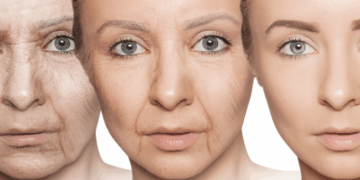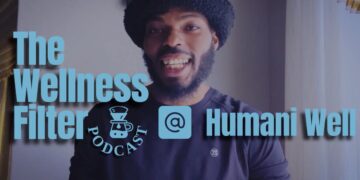- General Information
- Health
- Society
- Media
- Become a MemberPREMIUM
- Events
- Contact Us
- Shop
- Categories
- Access to Health
- Ageing & Longevity
- Asset-Based Community Development
- Community & Health
- Ecology & Environment
- Economic & Political Root Causes
- Economic Stability
- Education
- Environmental Contaminants
- Ethnicity & Gender
- Health Condition of the Body
- Holistic Approach
- Law & Human Rights
- Men’s Health
- Natural Medicine
- Nutrition & Food
- On A Philosophical & Ethical Note
- Political Acceptance & Opposition
- Race
- Social Determinants of Health
- Traditional Medicine & Adjuvant Therapies
- Transhumanism
- Wellness
- Women’s Health
PAINKILLERS MAY INDUCE CHRONIC PAIN
Recent research shows concerns about the use of NSAIDs
Pain is one of the most well-known symptoms on earth. Whether it is physical or emotional pain, all of us can relate to the discomfort this presents. Nonetheless, emotional or psychological pain cannot be considered as a sensation that will limit locomotor motion within the musculoskeletal system. In most of these cases, pain will hamper our body movement in one way or another, which is not always the case when feeling down, depressed, anxious, or in grief. Psychological or mental issues can lead to physical pain when it occurs over a longer period.
In this article, we mainly focus on the pain that presents itself through biological physical responses, mostly localised and triggered by a non-psychological stimulus. Pain is one of the most common symptoms and is related to many diseases. From a neurobiological viewpoint, we can consider three kinds of pain.
WHAT IS PAIN?
Firstly, we consider nociceptive pain. This pain sensation is a warning to potential bodily harm that occurs by touching something extremely hot, cold, or sharp-edged. Our body wants to minimise this contact by inducing what we call, the ‘Pain Withdrawal Reflex’. It’s an autonomous reflex occurring within the spinal cord where the negative stimuli will immediately engage the nerve system liaised to that pain stimuli, inducing a reflex in the muscles to retract the body part away from the danger (Woolf 2010). Most of us have experienced the unpleasant feeling when hitting our thumb with a hammer, the first response of the body is to flex the arm, pulling away from the negative stimuli. This pain will last for a few seconds up to a couple of minutes and is still referred to as an ‘acute pain sensation’ or acute pain.
You will experience adaptive and/or protective pain after more severe tissue damage, this damage can occur externally, but quite often internally. Think of a ruptured ligament in the ankle after an inversion trauma or a herniated disc after a day’s work in the garden. It may feel as nociceptive pain at the start but pain prolongs over a longer period. This pain will inform the body to refrain or limit the range of motion to protect the affected body part.
This is not based on a reflex, it is an immune response to start the healing process of the underlying tissue damage. Inflammatory pain; as it is often called; does not solely produce pain sensations, but also induces tenderness and/or hypersensitivity (Woolf 2010). As we will soon discover, this inflammatory reaction is of great importance! Some professionals still refer to sub-acute pain when describing the inflammatory processes that are facilitated after the initial pain sensation.
Thirdly, we can consider pain sensations that are not necessarily triggered by nociceptive stimuli or tissue trauma. Think of bowel pain, cystitis, long-lasting joint pain, or tension-type headache of which an inflammatory response is mostly non-existent or had passed ages ago. We can consider these as maladaptive or pathological pain. If these occur within the nervous system they are often called neuropathic pain, in the case of intestinal or other underlying pathologies, they can be described as dysfunctional pain. In layman’s terms ‘chronic pain’ is still very much the term to pinpoint the issue. Some argue the term should be Chronic Pain Syndrome as not only biological but also psychosocial variables are at play when experiencing prolonged pain exceeding 3 months (Woolf 2010, Raffaeli et al. 2021).
Moreover, an extensive review concludes that child adversity variables like psychological trauma, (sexual) abuse, neglect, e.g. are strongly associated with the development of chronic pain in later life (Nicolson et al. 2023).
THE HISTORY OF PAIN RELIEVE
As pain is unsettling, humans always try to alleviate this unpleasant feeling. Massage or rubbing the tender spot is quite often the first natural response. Nonetheless, supplementary pain relief has found its way as a treatment throughout history by using decoctions or herbal preparations most often based on salicylic acid (today called Aspirin) derived from willow bark. This form of pain management dates back to a couple of thousands of years. Not that anyone had any clue back then what salicylic acid was, positive experiences were shared using verbal communication from one generation to another.
Since the 18th century, it has been established that salicylic acid has anti-inflammatory properties. Throughout the 20th century, more aspirin-like drugs hit the market and are today colloquially known as non-steroid inflammatory drugs (NSAIDs), depending on the variety and dose, their working is bipolar: analgesic (pain reduction) and/or anti-inflammatory (Vane and Botting 1996). Ibuprofen/brufen, naproxen, piroxicam, and diclofenac are most commonly used today but regular use of these meds may lead to heart failure, gastric ulcers, bleeding, headaches, tinnitus, and dizziness. Every one of these products raises specific safety concerns (Fokunang et al. 2018).
TISSUE DAMAGE AND THE NATURAL RESPONSE
In this article, we will focus on pain and its inflammatory process as a consequence of tissue damage in the body. Tissue damage is followed by an autonomous immune response that recognises the damage; this first response is fuelled by macrophages, histocytes, and other antigen-presenting cells. Consequently, the immune cells get activated in the damaged cells and the natural destruction of traumatised tissue will be initiated. In the last phase, the reparation and regenerations of the damaged cells is facilitated. Leukocytes (white blood cells), interplaying with blood platelets, will help mediate the immune response and clean up the debris. This is the inflammatory phase (Harvanona and Durankova 2025).
Many other immune components will play their part in facilitating healing. One of them is the prostaglandins (COX-1 and COX-2, COX=Cyclooxygenase). An increase in COX-2 expression is noticed in inflamed tissue, while COX-1 initiates the first step of acute inflammation (Wautier and Wautier 2023). NSAIDs are particularly effective in reducing the COX-1 and COX-2 processes, consequently, hindering the natural healing process, facilitated by these prostaglandins (Yao and Narumiya 2019).
Now think of situations that may induce this process. Most of us have endured some physical trauma throughout life like a sprained ankle, a lumbago, or tendinitis of the shoulder or Achilles tendon. All of these traumata induce these initial inflammatory responses.
It’s a long-held belief that inflammatory responses need to be stopped as soon as possible as the body might overreact creating more nuisance. Also, as a patient experiencing pain, we often rush to the doctor, pharmacy or dive into our own pharma cabinets seeking a quick fix for the issue. Many will immediately start taking NSAIDs to relieve the pain and inflammation. However, recent research sheds a different light on the NSAID and pain modulation, and questions if the benefits outweigh the long-term consequences.
NSAIDs, CHRONIC PAIN AND TISSUE DAMAGE
The standard treatment for acute traumatic injuries today is still the use of NSAIDs. Although these pain meds have been considered a first-line treatment for decades, we have never faced such a large global population suffering from chronic pain (+3 months) and high-impact chronic pain (chronic pain limiting daily life activities). A recent study from the US concludes that amongst pain-free adults in 2019; 52.4 cases per 1.000 developed chronic pain in 2020. 12 in 1.000 suffered from high-impact chronic pain within that same year (Nahin et al. 2023). Staggering figures that set to think how efficient pain treatments really are.
Recent research shows concerns about the use of NSAIDs at early pain onset. Twenty years ago, the Rotterdam Study was published concluding that the long-term use (+180 days) of diclofenac in osteoarthritis (OA) patients led to a 2.4 fold increase of hip OA, and 3.2 fold increase in knee OA (Reijman et al. 2005).
More recently, studies have found that chronic pain develops when NSAIDs are taken in the acute phase leading to an increased risk of persistent pains over time, suggesting that NSAIDs have a negative effect on pain duration. Parisien et al. (2022) describe the physiological pathways involved and show clearly that the natural healing process as described higher up in this article gets severely hampered. The NSAIDs limit the biological pathways needed to obtain full regeneration and to optimally restore the damaged tissue (Yao and Narumiya 2018). When taking NSAIDs in the early acute stages, newly formed cell structures are of less quality, less resistant to forces, and misaligned. Hence, creating an unhealthy bunch of cells that keep sending pain signals.
This is confirmed in a review by Schmid and Brüne (2021) who warrant against the use of NSAIDs in the acute phase of inflammatory processes as this interferes with a successful resolution of the damage which in turn leads to the development of chronic pain. Sisignano and Geisslinger (2023) conclude the same and suggest urgently rethinking the use of NSAIDs in the treatment of early-onset pain.
Overall, there is no solid proof that NSAIDs score better in relieving pain, in the acute phase than a pure analgesic like paracetamol, as concluded in a highly acclaimed Cochrane Review (Jones et al. 2015). Another Cochrane Review (Cashin et al. 2023) found NSAIDs to contribute minimally towards pain relief in the acute phase, and conclude there is no evidence supporting its use in recurrent chronic conditions. They also point out that paracetamol’s effect on pain is comparable to that of NSAIDs.
Almost all of the cited studies describe the many side effects of NSAIDs; certainly when used frequently or over a prolonged time, these include gastro-intestinal bleeding, cardiovascular and thrombotic risks, renal toxicity and the more specific safety signals, depending on the type of NSAID, as mentioned earlier in this article. There is also a safety issue when combining NSAIDs with antihypertensives, diuretics, blood thinners, and antidepressants; elderly people tend to get many of these pills prescribed inducing unwanted drug-drug interactions and more comorbidities (Moore et al. 2015).
CONCLUSION
NSAIDs are still considered first-line treatment in acute, and even in patients with non-inflammatory chronic pain syndrome. Recent research based on pathophysiological pathways analysis concludes that the use of NSAIDs in early onset pain (acute trauma) hampers the natural healing process, restoration, and regeneration of tissue damage. The natural process is crucial to achieve maximal restoration and regeneration of traumatic physical disorders and to minimise the risk of developing chronic pain in the long run.
Extensive review studies further conclude that the effect of NSAIDs in both acute and chronic disorders is negligeable and doesn’t present better outcomes than analgesics, like paracetamol.
Last but not least, there are significant safety issues to be noted, primarily within the elderly population.
REFERENCES
CASHIN, A. G., WAND, B. M., O’CONNELL, N. E., LEE, H., RIZZO, R. R., BAGG, M. K., O’HAGAN, E., MAHER, C. G., FURLAN, A. D., VAN TULDER, M. W. & MCAULEY, J. H. 2023. Pharmacological treatments for low back pain in adults: an overview of Cochrane Reviews. Cochrane Database Syst Rev, 4, Cd013815.
FOKUNANG, C., FOKUNANG, E., FREDERICK, K., NGAMENI, B. & NGADJUI, B. 2018. Overview of non-steroidal anti-inflammatory drugs (nsaids) in resource limited countries. Moj Toxicol, 4, 5-13.
HARVANOVÁ, G. & DURANKOVÁ, S. 2025. Inflammatory process: Factors inducing inflammation, forms and manifestations of inflammation, immunological significance of the inflammatory reaction. Alergologia Polska-Polish Journal of Allergology, 12, 54-61.
JONES, P., DALZIEL, S. R., LAMDIN, R., MILES-CHAN, J. L. & FRAMPTON, C. 2015. Oral non-steroidal anti-inflammatory drugs versus other oral analgesic agents for acute soft tissue injury. Cochrane Database Syst Rev, Cd007789.
MOORE, N., POLLACK, C. & BUTKERAIT, P. 2015. Adverse drug reactions and drug–drug interactions with over-the-counter NSAIDs. Therapeutics and clinical risk management, 1061-1075.
NAHIN, R. L., FEINBERG, T., KAPOS, F. P. & TERMAN, G. W. 2023. Estimated rates of incident and persistent chronic pain among US adults, 2019-2020. JAMA Network Open, 6, e2313563-e2313563.
NICOLSON, K. P., MILLS, S. E., SENARATNE, D. N., COLVIN, L. A. & SMITH, B. H. 2023. What is the association between childhood adversity and subsequent chronic pain in adulthood? A systematic review. BJA open, 6, 100139.
PARISIEN, M., LIMA, L. V., DAGOSTINO, C., EL-HACHEM, N., DRURY, G. L., GRANT, A. V., HUISING, J., VERMA, V., MELOTO, C. B., SILVA, J. R., DUTRA, G. G. S., MARKOVA, T., DANG, H., TESSIER, P. A., SLADE, G. D., NACKLEY, A. G., GHASEMLOU, N., MOGIL, J. S., ALLEGRI, M. & DIATCHENKO, L. 2022. Acute inflammatory response via neutrophil activation protects against the development of chronic pain. Sci Transl Med, 14, eabj9954.
RAFFAELI, W., TENTI, M., CORRARO, A., MALAFOGLIA, V., ILARI, S., BALZANI, E. & BONCI, A. 2021. Chronic pain: what does it mean? A review on the use of the term chronic pain in clinical practice. Journal of pain research, 827-835.
REIJMAN, M., BIERMA-ZEINSTRA, S. M., POLS, H. A., KOES, B. W., STRICKER, B. H. & HAZES, J. M. 2005. Is there an association between the use of different types of nonsteroidal antiinflammatory drugs and radiologic progression of osteoarthritis? The Rotterdam Study. Arthritis Rheum, 52, 3137-42.
SCHMID, T. & BRÜNE, B. 2021. Prostanoids and Resolution of Inflammation – Beyond the Lipid-Mediator Class Switch. Frontiers in Immunology, Volume 12 – 2021.
SISIGNANO, M. & GEISSLINGER, G. 2023. Rethinking the use of NSAIDs in early acute pain. Trends in Pharmacological Sciences, 44, 193-195.
VANE, J. & BOTTING, R. The history of anti-inflammatory drugs and their mechanism of action. New Targets in Inflammation: Inhibitors of COX-2 or Adhesion Molecules Proceedings of a conference held on April 15–16, 1996, in New Orleans, USA, supported by an educational grant from Boehringer Ingelheim, 1996. Springer, 1-12.
WAUTIER, J.-L. & WAUTIER, M.-P. 2023. Pro-and anti-inflammatory prostaglandins and cytokines in humans: a mini review. International journal of molecular sciences, 24, 9647.
WOOLF, C. J. 2010. What is this thing called pain? The Journal of clinical investigation, 120, 3742-3744.
YAO, C. & NARUMIYA, S. 2019. Prostaglandin‐cytokine crosstalk in chronic inflammation. British journal of pharmacology, 176, 337-354.
Disclaimer
The views and analysis expressed in this content (video, blog, article, etc.) are solely that of the author and does not necessarily reflect the views of humani-well, the organisation, or other associated parties.
Medical disclaimer: you should not rely on the information on this website as a replacement for seeing a doctor or other qualified healthcare provider for a diagnosis or treatment. Nothing in this publication should be interpreted as a substitute for the advice of a qualified healthcare provider. Please consult a medical professional before using any information contained in this publication.
Drs. Sam Brokken
Next to guiding this bunch of great people at Humani-Well, Sam covers a broad range of topics. From biomedical issues to societal impact analysis. HIs biggest strength? Being a 'generalist, and master of none'. Know More
© 2025 Humaniwell | CHOOSE WISELY. Powered by NoCodeLabs.




























